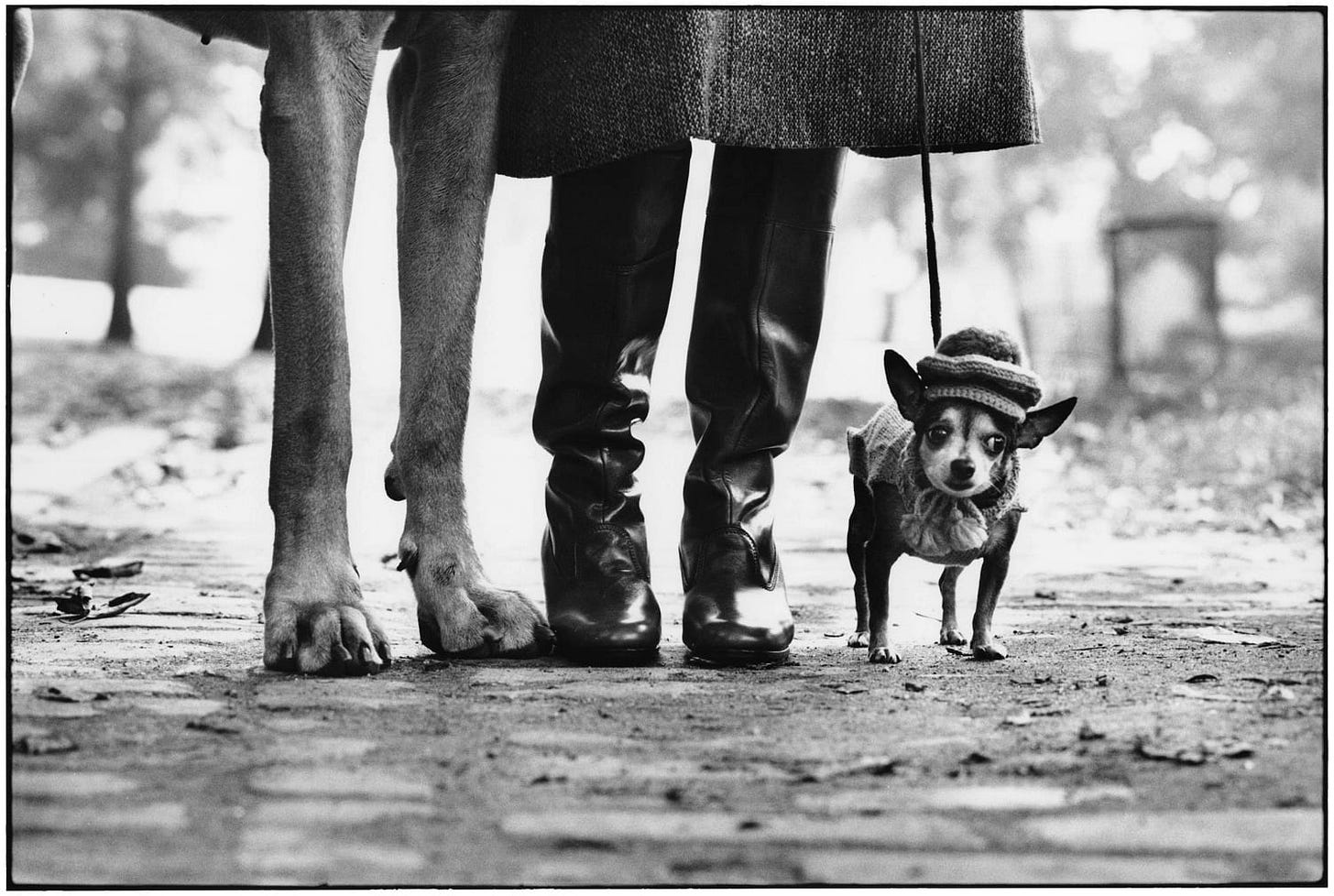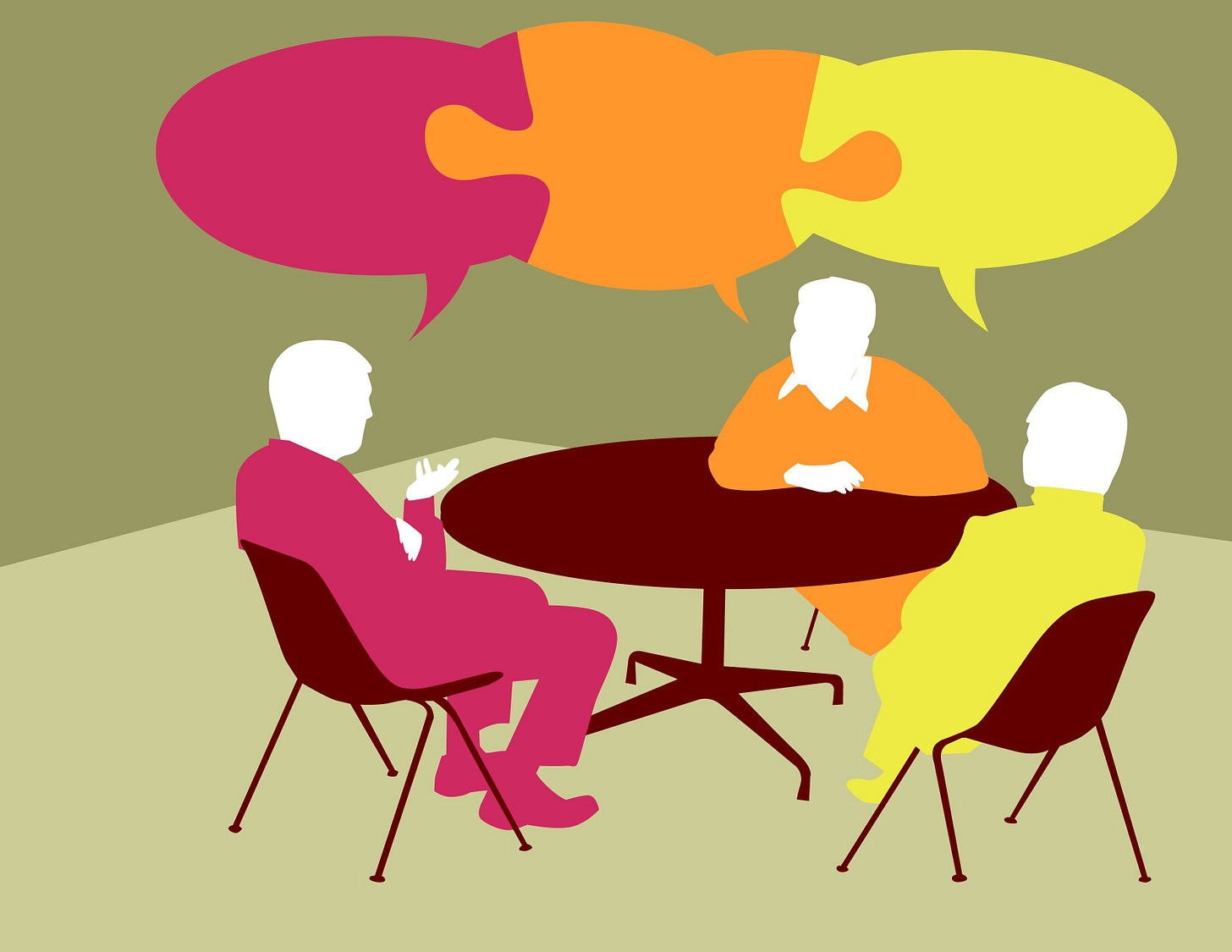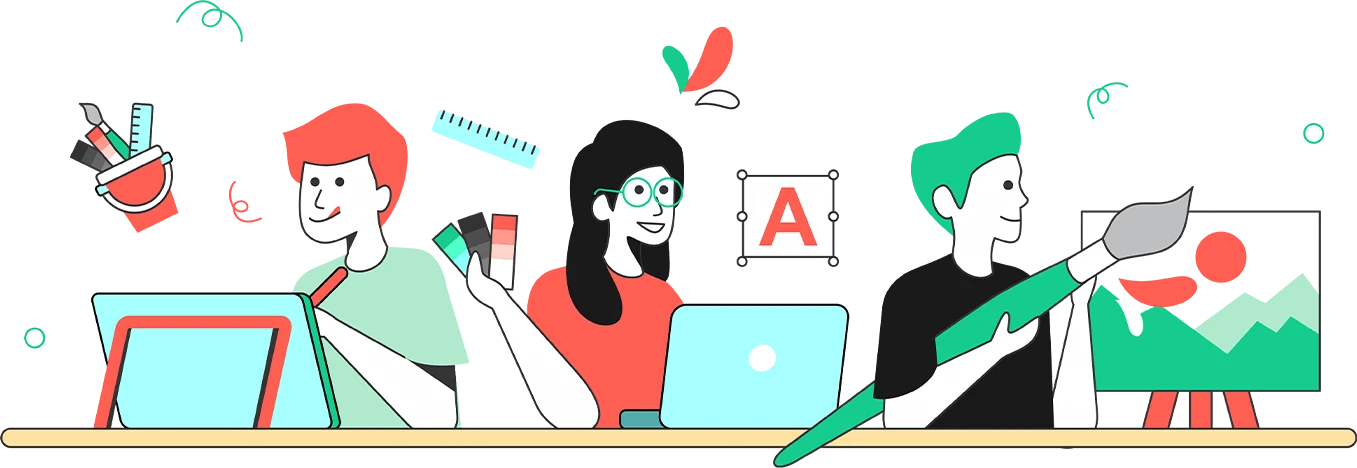The One Trait That Makes or Breaks Design Teams
Why emotional intelligence is the most valuable trait for creative teams.
Hi, I'm Manuel Saez, 2x Founder, Award-Winning Designer, and Emotional Intelligence Coach 🌻 Here I Share the advice I wish I had while building my businesses ➜ I love fixing old motorcycles 🛵🏍️
Reading time: 8 min.
Contents:
Attitude is Everything
Why Emotional Intelligence Matters in Creative Teams
For Me, Attitude Over Skills, Every Time
A Lesson in Attitude
How to Spot Emotional Intelligence in Hiring
A Framework for Leading Creative Teams
The Long Game
Attitude is Everything
Over the past 22 years, I’ve had the privilege of building and leading creative teams across a range of industries.
I’ve seen what drives success, what derails it, and how the dynamics of a team can make or break even the best ideas. One lesson has stood out above all: emotional intelligence isn’t just important—it’s the foundation of any thriving team.
And it all begins with hiring.
You’re not just recruiting skills or experience—you’re inviting a person into your team’s ecosystem. Resumes and credentials tell you what someone has done, but they rarely reveal who they are.
Most hiring processes lean heavily on the tangible: resumes, technical tests, and references.
These tools help justify decisions—but they miss the most important piece.
A person’s mindset, values, and emotional intelligence often play a far greater role in their long-term success.
In my experience, hiring is about more than checking boxes. It’s about finding people who can navigate setbacks with grace, thrive in collaboration, and elevate the team’s culture.
In this essay, I’ll share what I’ve learned about emotional intelligence in hiring, why it’s so critical, and how you can use it to build stronger, more resilient teams.
Why Emotional Intelligence Matters in Creative Teams
Creative work is unpredictable by nature. Deadlines shift, clients revise requirements, and even the best ideas can fall apart during execution.
These moments call for more than technical expertise—they require people who can adapt, stay calm, and work well with others.
But there’s another layer to consider.
Great designers and creative people are often deeply passionate about their work. This passion is what drives their brilliance, but it can also lead to challenges.
Strong personalities, differing opinions, and even ego can create friction during feedback sessions or design reviews. Without emotional intelligence, these moments can quickly spiral into unproductive clashes.
Emotional intelligence (EI) plays a critical role in managing these dynamics. People with high EI:
Communicate Effectively: They express their thoughts clearly, even in tense situations, and make space for others to do the same.
Give and Receive Feedback Gracefully: They approach critiques with openness rather than defensiveness, focusing on solutions rather than ego.
Resolve Conflicts: They listen with empathy, defusing tension and finding common ground when disagreements arise.
Stay Resilient: They handle setbacks without letting frustration derail the team or their creative process.
When designers have high emotional intelligence, design reviews shift from being ego-bruising events to opportunities for growth and collaboration.
They listen to feedback with curiosity rather than defensiveness, and they can deliver critiques without tearing others down.
Teams with emotionally intelligent members tend to be more cohesive, productive, and innovative. They create an environment where ideas flourish and challenges are met with creative solutions.
For creative leaders, spotting these traits during hiring isn’t just important—it’s essential for building teams that thrive.
For Me, Attitude Over Skills, Every Time
Hiring can be a complex process, and even with the best intentions, it’s easy to miss the signs that truly matter.
Over the years, I’ve learned to trust my team to assess the technical skills of candidates. My focus, instead, is on the emotional side—attitude, mindset, and values.
These traits often determine whether someone will contribute positively to the team. Skills can be taught with time and resources, but a person’s mindset is much harder to change.
A positive, proactive attitude can’t be learned in a workshop or picked up over a few months—it’s something deeper, shaped by experience and self-awareness.
Attitude also shapes the environment for everyone. One person’s negativity can ripple through the entire team, dragging down morale and productivity.
On the other hand, a positive attitude can inspire collaboration and resilience, lifting everyone up even during challenging times.
Emotional intelligence plays a big role here. It sets the tone for how someone approaches problems and conflicts. It’s the difference between escalating a small issue into a larger one or transforming a setback into an opportunity for growth.
This is why I put attitude and mindset at the center of my hiring decisions—they create the foundation for a strong, adaptable team.
A Lesson in Attitude
When I was around nine or ten, I worked at my dad’s store. One of my jobs was to go to the bank and make deposits.
One day, I came back late. My dad asked why, and I admitted I was too shy to hold my place in line, so people kept cutting in front of me.
He told me something I’ll never forget: “Son, attitude is what matters most. If you don’t believe me, look at Chiquito,” he said, pointing to our tiny Chihuahua. Despite his size, Chiquito was fearless—always standing tall and confident, no matter the situation.
That lesson changed how I approached challenges. It wasn’t about being aggressive or pushy—it was about standing my ground and knowing my worth. That shift in mindset became a core part of how I work and, later, how I hire.
When I evaluate candidates, I often think back to that lesson. I’m not just looking for technical skills or a polished resume. I’m looking for people who show that same strength of attitude—the ability to face challenges with confidence and resilience.
It’s not about being the loudest in the room but about bringing a sense of self-assurance and determination that uplifts the team.
Attitude isn’t just important for individuals—it’s contagious. A team filled with people who have the right mindset can tackle anything, turning obstacles into opportunities.
That’s why, for me, attitude always comes first ➜ (Lo primero es la actitud)
How to Spot Emotional Intelligence in Hiring
Emotional intelligence isn’t something you can measure with a test score or a line on a resume. It takes intentional effort to uncover during the hiring process, but when done well, it can reveal a lot about how a candidate will contribute to your team.
Over the years, I’ve developed a few strategies that help me assess a candidate’s emotional intelligence.
Ask Behavioral Questions
Behavioral questions are one of the best ways to understand how someone thinks and reacts in real-world situations. Instead of asking hypothetical questions, focus on specific past experiences, such as:
“Can you tell me about a time you disagreed with a teammate? How did you handle it?”
“What’s the biggest challenge you’ve faced at work, and how did you approach it?”
“Describe a time when you received feedback you didn’t agree with. What did you do?”
The key isn’t just in what they say but how they say it. Pay attention to their tone, level of self-awareness, and ability to reflect.
Do they take accountability for their actions?
Do they recognize what they could have done better?
Candidates with high emotional intelligence often show empathy, humility, and a willingness to learn from past experiences.
Include Collaboration Exercises
Resumes don’t tell you how someone behaves in a group setting. Whenever possible, include a collaborative task in your hiring process. This could be a brainstorming session, a design critique, or a mock project discussion.
Watch how the candidate interacts with others. Are they actively listening and engaging respectfully? Are they receptive to feedback and willing to adjust their approach when needed? These exercises offer a glimpse into how they might fit into your team’s dynamic and handle the collaborative nature of creative work.Pay Attention to Soft Skills
Soft skills are often overlooked, but they’re crucial for emotional intelligence. During the interview, observe how the candidate communicates. Do they give others space to speak, or do they dominate the conversation? Are their responses thoughtful, or do they rush to answer without considering the question?
Body language can also provide insights. Are they engaged and present, or do they seem detached? A candidate who listens attentively and responds thoughtfully is more likely to bring those skills into their daily interactions with the team.Look for Curiosity and Adaptability
Curiosity is often a sign of high emotional intelligence. Candidates who ask thoughtful, in-depth questions about the role, the team, and the company show a genuine interest in understanding how they can contribute.
Adaptability is just as important. If you introduce a hypothetical change in the role or team dynamics during the interview, watch how they respond. Are they open and solution-oriented, or do they react defensively? This can be a strong indicator of how they’ll handle inevitable changes in the workplace.Trust Your Intuition
To me, listening to my gut is one of the most important tools in the hiring process. While structured questions and exercises are essential, intuition often picks up what structured methods miss. Sometimes, you can sense if a candidate will mesh well with your team just by the way the conversation feels.
If something seems off—defensiveness, lack of self-awareness, or unwillingness to engage—it’s worth digging deeper. Intuition is especially valuable when combined with the other strategies, providing a fuller picture of the candidate.
By focusing on these traits during the hiring process, you’re not just building a team that can meet deadlines or complete tasks. You’re building a team that can grow, innovate, and face challenges together with strength and unity.
A Framework for Leading Creative Teams
Leading creative teams over the years have taught me that fostering emotional intelligence isn’t just about hiring the right people—it’s also about creating an environment where they can thrive.
I’ve tested different strategies to cultivate a workplace where creativity flourishes and individuals feel empowered to do their best.
A while back, I shared five principles for managing creative teams in a Fast Company article. These principles, rooted in emotional intelligence, provide a framework for building strong, cohesive teams. Here’s a summary:
1. Humility
Humility means being open to learning and teaching without ego. In creative work, this is essential for giving and receiving feedback. A humble team member separates their ideas from their identity, viewing feedback as an opportunity rather than a threat.
Fostering humility helps individuals focus on the bigger picture—the success of the project and the team—rather than personal pride. This mindset builds trust and makes collaboration smoother.
2. Candor
Clear and honest communication is the backbone of any successful team. Candor isn’t about being harsh; it’s about expressing thoughts and feedback in a straightforward yet respectful way.
When team members can speak openly without fear of judgment, problem-solving becomes faster and more effective. Encouraging candor creates a safe space for dialogue, which is crucial in creative environments where ideas are constantly evolving.
3. Optimism
Creative work is full of uncertainty, and setbacks are inevitable. Optimism—the belief that challenges can be overcome—inspires teams to approach problems as opportunities and maintain momentum during tough times.
Leaders who model optimism help their teams stay motivated and resilient, turning potential roadblocks into stepping stones for success.
4. Ambition
Ambition fuels growth and drives people to aim higher. It’s about striving to improve, learn, and accomplish meaningful goals. Ambitious team members push themselves to deliver their best work and elevate the entire team by setting a high bar for creativity and effort.
Celebrating wins, encouraging self-improvement, and challenging individuals to grow are all ways to build a culture of ambition that benefits the entire team.
5. Responsibility
Accountability is the glue that holds everything together. When team members take ownership of their work, they contribute to a culture of trust and reliability.
Responsibility means being proactive, meeting commitments, and taking pride in a job well done. Teams that value responsibility reduce friction and work more cohesively toward shared goals.
These five principles—humility, candor, optimism, ambition, and responsibility—aren’t a magic fix for avoiding conflict or challenges.
But they provide a strong foundation for fostering emotional intelligence and building a team where creativity thrives.
When these values become part of a team’s culture, they create a ripple effect: stronger trust, better collaboration, and a shared commitment to success.
As a leader, modeling these principles helps embed them into daily interactions, creating an environment where individuals and teams can flourish.
The Long Game
Emotional intelligence isn’t just important during the hiring process—it’s something you have to nurture every day to create a work environment where people can thrive.
Hiring sets the foundation, but the real work begins once someone joins the team.
It’s about building relationships, fostering trust, and making sure everyone feels supported to do their best.
Here are a few key takeaways to keep in mind:
Focus on attitude, not just skills: Technical skills can be taught, but emotional intelligence and a positive mindset are harder to develop.
Ask the right questions: Use behavioral questions to uncover how candidates handle challenges, give feedback, and collaborate with others.
Create a safe space for honesty: Encourage humility and candor to build trust and improve team dynamics.
Lead by example: Show optimism, ambition, and responsibility in your actions to inspire your team to do the same.
Keep the conversation going: Emotional intelligence doesn’t stop at hiring—check in with your team regularly to ensure they feel supported and engaged.
When you prioritize emotional intelligence in your hiring and leadership, you’re not just creating a team that can do great work. You’re creating a culture where people feel valued, connected, and motivated to grow.
Sending you good vibes 🌻
Manuel Saez







These are all great points! Reading between the lines sometimes gives you the real answers you're looking for during the hiring process.